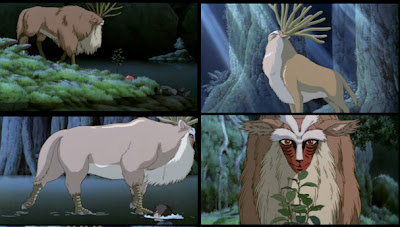Whilst watching the film I made notes on nature related design element, particularly how nature has been used to create fantasy themes in the film. This post will probably contain a lot of images but it’s worth it as each one looks like a beautifully crafted painting.
 |
| This shows the moon at night reflecting the light as our own moon does; with however the added element that it is starting to form its own dust particle rings. |
 |
| In this world Nature has gone wild and covered most of the planet in dense forests and alien-like plants. |
 |
| The once modern cities are now desolate wastelands left exposed or buried under vast forests. |
 |
| Branches of ivy turn into snakes of flora attacking anyone who approaches. The idea that trees can attack twists plants into a force to be feared. |
 |
| Two humanoid spirits fusing together through the power of the tree. |
 |
| Another example of human life being given through the forest. |
From this film I have learnt that effective way to create elements of fantastic nature are to use contrasting environments, fusion elements, colour changes, spiritual entities, elements of the unknown or unexplained and things within the familiar. Some work in response to this is now called for I think...
All images are stills from Origin: Spirits of the Past (2006)
directed by Keiichi Sugiyama



































